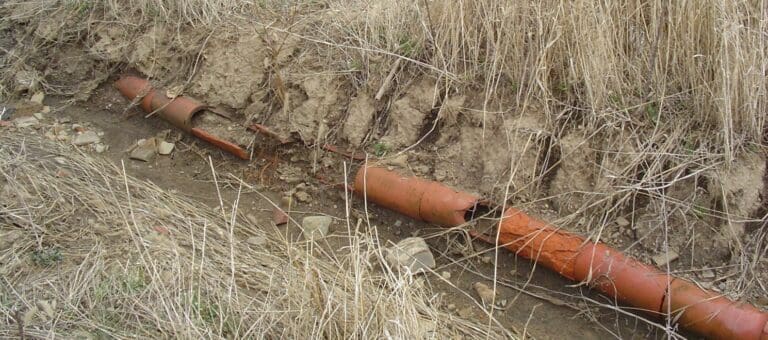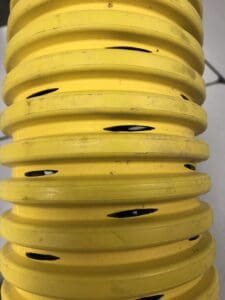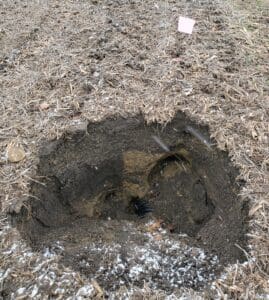Though often hidden behind a door, wall, or cupboard, we are all aware of our indoor plumbing and the necessity of taking care of it. Few household catastrophes cause greater headaches than an overflowing toilet or frozen line bursting in the wintertime. But did you know your plumbing extends outside your house and that it requires that same care and maintenance to function properly?
If you have a septic tank and leach field, you are likely familiar with the concept of outdoor plumbing, and you hopefully have an idea of how your system works & how to keep it in optimal condition. (Though I won’t be covering that in this post, HERE is a great resource for homeowners.)

Today I want to talk about the other pipes that move water underground and are often referred to as drain tile. If you have rain gutters that don’t outlet directly on the surface, you probably have underground tile that carries rainwater downhill to a suitable outlet location. Similarly, the foundations of some houses are below the water table and consequently a sump pump is installed to prevent basement flooding. Groundwater is pumped up and out of the house before it enters a tile that is then outletted away from the foundation.
Agricultural producers rely on tile to improve crop production by draining excess water through the soil profile. Most of us are familiar with the idea of irrigation – the process of providing growing plants with additional water when the soil becomes too dry. In contrast, tile drainage lessens the amount of moisture in the upper soil profile, and in doing so, increases the amount of air between soil particles so it is accessible to growing roots. Lowering the water table also forces plants to develop a larger root system to reach the water. Ideally, this results in an increase in crop yield.

Historically, tile consisted of short segments of clay pipe that were usually hand dug and buried, end to end. Excess water was able to enter the piping system through small gaps between tile pieces. Nowadays, this underground plumbing consists of corrugated plastic pipe that often has perforations throughout, and machinery buries the tile lines, typically at a depth of 2 ½ -5 feet. Depending on the soil type, grade of ground, and crop being raised, farmers may install a few lines of tile to drain an isolated wet spot or an entire network below the surface to provide drainage to a whole field. Though systematic tile can be costly, the investment is generally recouped in approximately five years.

Just like your indoor plumbing, underground piping requires regular maintenance to work properly. Roots of woody species such as willow and maple will travel far and wide for water and can often clog tile if intercepted. As a result, we recommend that trees be planted at least 75’-100’ away from tile lines. Issues can also arise when tile lines are disrupted by construction or crushed by heavy equipment. Additionally, outlets must be maintained, ensuring they don’t become inundated or buried in sediment. Signs of tile failure might include “blow holes”, caused by pressure building behind clogged tile, or water pooling in places that used to drain.
At Fairfield SWCD, we have always aided Fairfield County residents and agencies with drainage issues and provided guidance. With two Engineering Technicians on staff, we offer tile design services to county agricultural producers for a fee. Contact the office if you’re interested in a tile plan for your field.

If your interest is peaked and you’re thirsty for more, check out our “What is Field Tile?” fact sheet or this past edition of Fairfield Focus.


